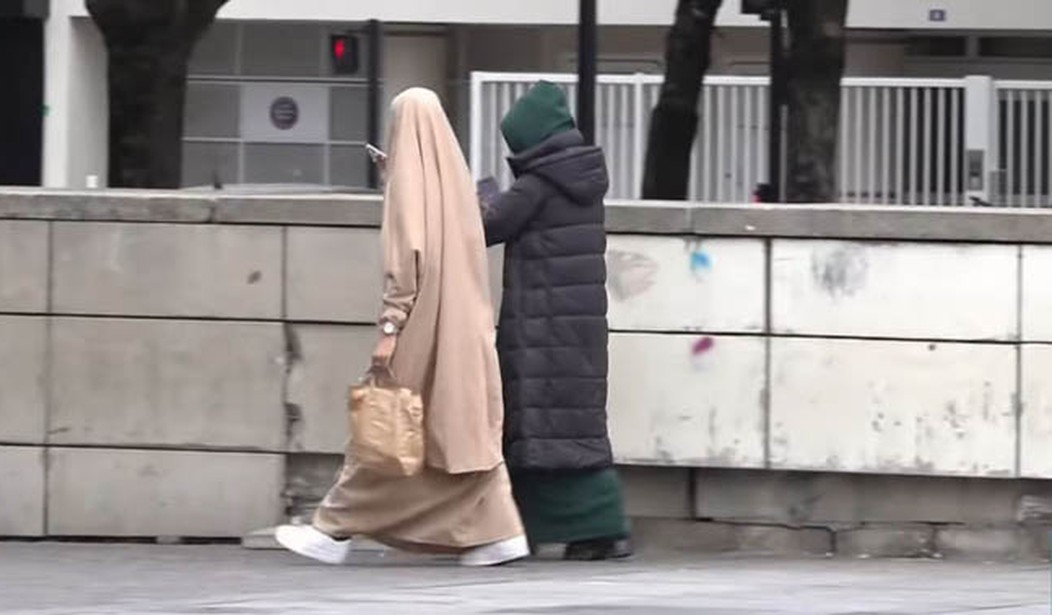France banned the wearing of the hijab and other religious symbols from schools back in 2004. Then in 2011 it banned the burqa in any public place. Yesterday, the French education minister announced a new ban on the wearing of abayas in schools.
“It will no longer be possible to wear an abaya at school,” Education Minister Gabriel Attal told TF1 television, saying he would give “clear rules at the national level” to school heads ahead of the return to classes nationwide from September 4…
“You enter a classroom, you must not be able to identify the religion of the students by looking at them,” he said.
An abaya isn’t as extreme as a burqa but when combined with a headscarf it covers a woman from head to toe with the exception of her face. The decision to ban them comes amid a surge of Muslim students in France wearing them to school.
The focus on abayas follows a reported increase in girls wearing Islamic clothing in French schools, in a trend that some say is a violation of the country’s secularist values. Last month, President of the National Assembly Yaël Braun-Pivet, who is a member of President Emmanuel Macron’s Renaissance party, called for “a totally secular state school” where there is “no ramadan, no abaya, no ostentatious religious signs.”
There is a partisan divide over the decision with the right mostly praising it and the left claiming it is a violation of civil rights.
Jean-Luc Mélenchon, a far-left firebrand, who placed third in France’s 2022 presidential election, described his “sadness to see the return to school politically polarized by a new absurd entirely artificial religious war about a woman’s dress.”
“When will there be civil peace and true secularism that unites instead of exasperating?” Mélenchon asked.
French school unions seem to agree this is a real issue even if they think the Macron government is capitalizing on it.
Official statistics show the number of incidents related to laïcité reported by school officials has increased, to anywhere between 200 to 900 per month over the past year, among a middle- and high-school student population of nearly six million.
Unions representing school administration officials welcomed the ban, arguing the matter shouldn’t have been left to the varying interpretations of headmasters scattered across roughly 10,000 middle and high schools. Teacher unions were more circumspect.
Sophie Vénétitay, the head of one of the main teacher unions, called the ban a “political maneuver” by President Emmanuel Macron to curry favor with the right. But, she added, abayas were a real issue that should neither be “overestimated nor underestimated.”
The left’s view on this seems to fall along two lines of argument. First that the abayas is just a long dress with no religious meaning. Except that it’s probably only Muslim girls wearing this. If there’s no religious meaning, then wearing something else shouldn’t be a big problem but I suspect it will be.
The other argument is that this decision will make Muslims feel further stigmatized. I’m sure that’s true. It’s also true that it was Muslims who murdered people in Paris and in Nice. And it was a deranged Muslim who, three years ago, beheaded a school teacher for showing his students Charlie Hebdo cartoons. If Muslims get more scrutiny as a group it’s because their extremists have proven to be the most murderous over the past decade.







Join the conversation as a VIP Member